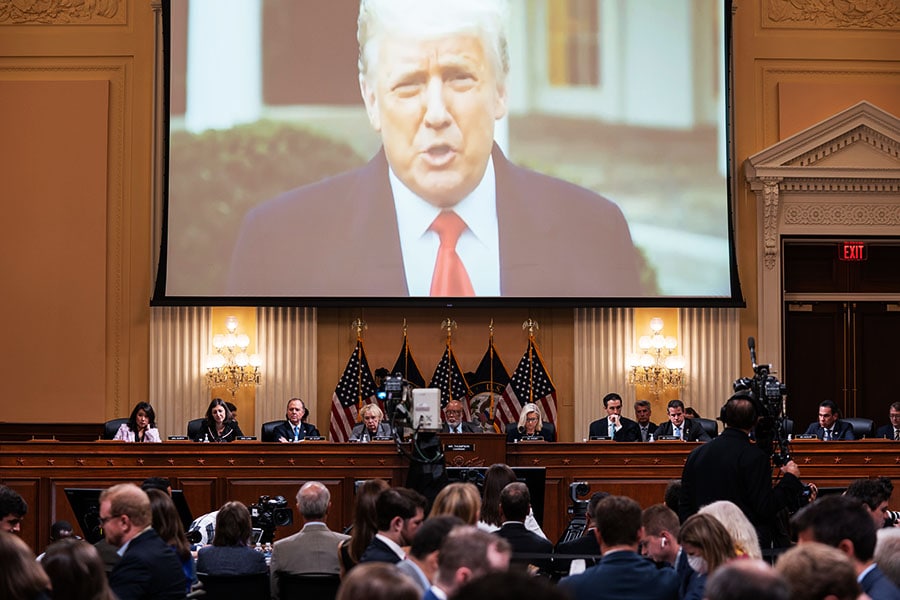
Donald Trump: Unhinged commander-in-chief veering wildly out of control
The breathtaking testimony presented by his former aide, Cassidy Hutchinson, at Tuesday's House select committee hearing portrayed Trump as volatile, violent and vicious, single-minded in his quest to overturn an election he lost no matter what anyone told him
 A video released by former President Donald Trump on Jan. 6 is played during testimony by Cassidy Hutchinson, who worked for former President Trump’s chief of staff, before the House committee investigating the Jan. 6 attack on the Capitol, on Capitol Hill in Washington, June 28, 2022. In the final, frenzied days of his administration, Trump’s behavior turned increasingly volatile as he smashed dishware and lunged at his own Secret Service agent, according to testimony. (Haiyun Jiang/The New York Times)
A video released by former President Donald Trump on Jan. 6 is played during testimony by Cassidy Hutchinson, who worked for former President Trump’s chief of staff, before the House committee investigating the Jan. 6 attack on the Capitol, on Capitol Hill in Washington, June 28, 2022. In the final, frenzied days of his administration, Trump’s behavior turned increasingly volatile as he smashed dishware and lunged at his own Secret Service agent, according to testimony. (Haiyun Jiang/The New York Times)
WASHINGTON — He flung his lunch across the room, smashing the plate in a fit of anger as ketchup dripped down the wall. He appeared to endorse supporters who wanted to hang his own vice president. And in a scene laid out by a former aide that seemed more out of a movie than real life, he tried to wrestle away the steering wheel of his presidential vehicle and lunged at his own Secret Service agent.
Former President Donald Trump has never been seen as the most stable occupant of the Oval Office by almost anyone other than himself, but the breathtaking testimony presented by his former aide, Cassidy Hutchinson, at Tuesday’s House select committee hearing portrayed an unhinged commander in chief veering wildly out of control as he desperately sought to cling to power and egged on armed supporters to help make it happen.
The president that emerged from her account was volatile, violent and vicious, single-minded in his quest to overturn an election he lost no matter what anyone told him; anxious to head to the Capitol to personally disrupt the constitutional process that would finalize his defeat; dismissive of warnings that his actions could lead to disaster; and thoroughly unbothered by the prospect of sending to Congress a mob of supporters that he knew included people armed with deadly weapons.
A president who liked to describe himself as a “very stable genius” was anything but that as Hutchinson observed in those final, frenzied days of his time in office. Hers was not a description that surprised many of those who worked for Trump and had seen him up close in the preceding four years or, for that matter, many who had known him in the decades that preceded his life in politics. But hearing her recount it all under oath, on live television, brought home how much Trump and his White House spiraled in its perilous last chapter.
“This is f-ing crazy,” Pat Cipollone, his White House counsel, declared at one point on Jan. 6, 2021, as Hutchinson recalled it, when Trump was busy castigating Vice President Mike Pence rather than trying to call off the attack on the Capitol.
©2019 New York Times News Service







